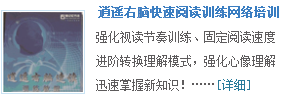Unit 6 Where is my eraser?
第一时
学习过程及引导:
一、板书题、揭示目标
学习目标:
1. 听说单词
chair, desk, window, door, floor, classroom
2. 巩固句型:
This is a chair. / That is the door.
These are desks.
3. 培养学生的表达能力。
二、指导自学
我们很棒!通过自学,让我们变得更棒吧!大家有没有信心?
好,接下我们就开始吧!
自学指导:打到单元词汇表Unit 6,请大家对照单词表,试着
完成小练习册36页的内容,这些单词的意思原是这样啊!然后根据之前所学知识,试着读出这些单词。
如果遇到困难,和同桌讨论,合作学习。
三、学生自学
学生看书,思考,合作讨论。
四、学生讨论、更正、归纳,合作探究。
1. 热身(Warming up)
Let’s count.
师带领学生复习数字一到十。
2. 你的眼睛会观察吗?
T: How many chairs are there in your classroom?
师边问,边板书chair,指着学生的椅子/板凳。让学生意会本单词的英文以及读音,跟着读。
There are sixty five students in our class. So there are sixty five chairs. What about desks? 师指着桌子,让学生会意,跟着读,desk, desk.
T:Today we are going to learn unit six. We are going to learn some new words about the things nearby. 板书题.
3. 单词教读与练习
Chair, chair, chair 椅子
Desk, desk, desk 桌子
Window, window, window 窗户
Door, door, door 门
Floor, floor, floor地板
Classroom, classroom 教室
(前面的单词用升调,最后一个单词降调)
4. 当堂训练二:小练习册39页think and dra
5. 单复数练习P51
前面我们已经复习了一到十的数字,现在看看数字和我们的新单词怎么组合呢!
Two doors three windows
Four boys five girls
Ten desks and chairs
6. Pair works.
两到三人一组,指着实物,练习
This is a desk / chair/ door / window, etc.
These are desks and chairs.
7. 小结
【后反思】
第二时
教学目标:学习句型Where is my …?询问对方的某物在什么地方,以及各种回答:Look. It’s there, on the floor.
It’s in your bag.
教学重点:熟练掌握句型,并进行简单的对话。
A: Excuse me, Su Nan, Where is my eraser?
B: Look. It’s there, on the floor.
A: Thank you.
教学难点:通过学习情景对话,能有效的把词汇和功能结构
Excuse me, Where is /are…? It’s there, on the floor. /Thank you.相联系,达到自如的进行语言输出的目的。
教学环节:
学习目标
(一)学习本句型,并进行替换单词练习。
(二)进行询问别人时委婉地的语气练习。
(三)学会提问和回答物品的所在位置,并能在实际情境中运用。
(四)学习方位词on, in, near, under
自主探索
(一)温故知新
1.复习上节所学单词。教师指着图片,学生用英语读出并试着拼写。
2. Warming-up: Look and think. Where is the cat?
(二)方法
自主读part A的Let’t talk的句子,师生一起理解句子意思。
(三)互助释疑
同桌间交流句子意思。找出疑点,全体交流,教师反馈。
(四)探究出招
模仿例句造句,小组内交流,纠正错误。
展示交流
1.小组合作完成Part B,Do and say
(1) Put your pencil in your box.
(2) Put your pen on your book.
(3) Put the chair near the desk.
2.班级展示
指名学生上台读句子演示,全班交流。
点拨升华(8分钟)
(一)教师放录音Part A的Let’s talk.学生跟读,纠正读音。
(二)小组内做对话练习,并写出自己的对话。
堂作业(5分钟)
作业当堂清
1.完形。
A: Excuse ___, Where is ___eraser?
B: Look. It’s ______,___ the floor.
A: Thank ____.
2.挑战自我
A: Li Shan, where ____my pencil?
B: Look. It is _______ your bag.
板书设计:
Unit 6 Where Is My Eraser?
A: Excuse me, Su Nan, Where is my …?
B: Look. It’s there, on/in the ...
A: Thank you. / Thanks.
后反思:
第三时
教学目标:
一.运用“四会”词
chair, desk, window, door, floor, classroom造句,并用所学单词和句型进行对话。
二. 进一步学习句型Where are my …?询问对方自己的东西在哪里,以及各种回答:They are …并表示感谢。
教学重点:掌握本句型及其回答
教学难点:熟练句型,运用已学单词替换,练习对话。
教学环节:
一. 学习目标(2分钟)
(一)运用“四会”单词chair, desk, window, door, floor, classroom,并用所学单词和句型造句和练习对话。
(二)学习Where are my …?句型及其回答。
二. 自主探究
(一)温故知新
运用上节所学知识操练对话:
1.师生问答。
A: Excuse me, Where is my …?
B: Look. It’s there, on/in the...
A: Thank you. / Thanks.
2.生生对话。
(二)导入新
听录音Part B,Let’s learn more.学生说出自己听到了什么。
(三)互助释疑
同桌间读对话,理解特殊疑问句的用法和回答。
(四)探究出招
小组合作用转换方位介词under and near造句, 理解其意思。
三. 展示交流(10分钟)
(一)小组展示
小组内练习用英语询问东西所放的位置,自己编写对话。
(二)班级展示
指名小组上讲台进行情景练习。
四. 点拨升华(8分钟)
(一)教师放录音,学生跟读,纠正读音。
(二)学生开火车读单词。
(三)小组内分角色读对话。
(四)上台表演对话。
五. 堂作业(5分钟)
(一)作业当堂清
1.单词拼写并说出汉语意思
ch _ i _ d_ _k w _n_o_ d_ _r
fl_ _r cl_ssr_ _m
(二)挑战自我
Look and choose.
in on near under
1.The cat is ______ the box.
2.The dog is ______the floor.
3.The socks are ______ the chair.
4.A: Where is the desk?
B: It’s_______ the windo
5.A: Where are the balls?
B: They are _____ the desk.
板书设计:
Unit 6 Where Is My Eraser?
A: Where are my shoes?
B: They are under the chair.
A: Where are my trousers?
B: They are near the desk.
后反思:
第四时
教学目标:通过游戏、练习等方式巩固本单元知识。
教学重点:巩固练习本单元所学单词和句型。
教学难点:通过歌曲的学习,达到情感教育。
教学环节:
学习目标
(一)做游戏,做练习,巩固本单元所学单词和句型。
(二)唱歌曲,体会其中的教育意义。
二.自主学习
(一)温故知新
分角色读对话,复习上节内容。
A: Excuse me, Su Nan, Where is my …?
B: Look. It’s there, on/in the ...
A: Thank you./Thanks.
A: Where is my eraser?
B: It’s there, on the floor.
A: Where is my chair?
B: It’s in the bag.
(二)方法
学唱本上的歌曲《Where Is Charlie?》理解含义。
(三)互助释疑
小组内交流歌曲内容。
展示交流(10分钟)
(一)请同学上台表演歌曲,教师进行适当的情感教育。
(二)请同学上台唱歌曲,巩固所学知识。
(三)小组交流Part C(Look and write)部分,完成练习。
四. 点拨升华
(一)教师放录音,学生跟读,纠正读音。
(二)指名学生有感情地读对话。
五. 堂作业(5分钟)
Read and tick or cross.
1. The dog is near the windows.
2. The cat is on the chair.
3. The rabbits are under the box.
4. The elephants are in the zoo.
后反思:
Unit 7 There is a TV in the classroom.
第一时
学习过程及引导:
一、板书题、揭示目标
学习目标:
1. 学生能听说新单词:
Student, teacher, fan, TV, blackboard, light
2. 简单了解句型:
There is …
3. 激发学生探索知识的兴趣,养成积极主动地进行观察动脑的习惯。
二、指导自学
我们很棒!通过自学,让我们变得更棒吧!大家有没有信心?
好,接下我们就开始吧!
自学指导:打到小练习册43页,试着完成look and tick. 然后根据之前所学知识,试着读出这些单词。
如果遇到困难,和同桌讨论,合作学习。
三、学生自学
学生看书,思考,合作讨论。
四、学生讨论、更正、归纳,合作探究。
1. 热身(Warming up)
师胳膊画一个大圈,说We are in the classroom. There are three windows in our classroom. What else can you see in the classroom? 学生可能会用汉语说:电灯,黑板……
师:How nice it is if there is a TV in the classroom!
板书画电视,边写边让生跟读TV, TV.
2. Teaching procedure:
Today we are going to learn unit 7, there is a TV in the classroom. 教室里有一台电视机。
I am a teacher, and you are students. 板书单词,吹泡泡、大小声教读,学生开火车。
Now lift your heads and you can see some lights.
Light, light, light 灯
And now look at me, there is a blackboard near me.
Blackboard, blackboard, blackboard 黑板
3. 生练习本写单词,师巡视,注意强调学生的规范书写。
4. 当堂训练二:
Do the exercise of look, match and trace on page 44.
A teacher, a student, a fan, a blackboard
5. Let’s talk.
What’s in the classroom?
There is a TV in the classroom.
Yeah, it’s there.
There are two blackboards in the classroom, too.
6. 总结
7. 后练习
【后反思】
第二时
学习过程及引导:
一、板书题、揭示目标
学习目标:
1. 学生能熟练听说单词:
Student, teacher, fan, TV, blackboard, light, sofa
2. 学生能熟练运用句型:
There is …
There are …
二、指导自学
我们很棒!通过自学,让我们变得更棒吧!大家有没有信心?
好,接下我们就开始吧!
自学指导:打到小练习册46页,试着完成think, write and number. 看谁的眼睛最好使!
Blackboard, teacher, fan, light
如果遇到困难,和同桌讨论,合作学习。
三、学生自学
学生看书,思考,合作讨论。
四、学生讨论、更正、归纳,合作探究。
1. Boys and girls, Miss Wang has a big and cozy home. In my home, there is a TV, a sofa and a computer. What’s in your home?
学生把书打到53页,观察Look and tick图片,回答:
What’s in your home?
There is a windo
There are shoes.
There is a sofa.
There is a ball, etc.
2. Let’s learn more.
How many students are there in the classroom?
There are twenty.
How many teachers? There is one.
How many fans? There are four. And there are six lights.
How many 提问数量,后+可数名词的复数形式。一般情况下名词的复数在其后加s。
例:How many books do you have?
How many students are there in your class?
3. Look and say.
What can you see in the school?
学生讨论汇报:There is a car near the school. There are four students. There is a teacher. There are three bikes under the tree. There is a big building.
4. Ask and answer.
几位同学上台表演。
学生道具:一张桌子,一张椅子,一个书包,两本书,一块橡皮,一把尺子。
What’s in your desk?
There is a bag in it.
What’s on your desk?
There are two books on it.
What’s near the chair?
There is a ruler near the chair.
What’s under the chair?
There is an eraser under it.
5. 当堂训练:
Read, look and write T or F.
47页练习:看图判断正误。
6. 总结
7. 后练习
第三时
学习过程及引导:
一、板书题、揭示目标
学习目标:
1. 学生能听说11-20的数字并掌握-teen的规律:
Eleven, twelve, thirteen, fourteen, fifteen, sixteen, seventeen, eighteen, nineteen, twenty
2. 学生在运用句型的基础上结合数字以及名词单复数:
There is a/one 名词单数…
There are …可数名词复数
二、指导自学
我们很棒!通过自学,让我们变得更棒吧!大家有没有信心?
好,接下我们就开始吧!
自学指导:结合本单元57页内容完成小练习册47页 look and circle. 你能找出这些数字的特点吗?
如果遇到困难,和同桌讨论,合作学习。
三、学生自学
学生看书,思考,合作讨论。
四、学生讨论、更正、归纳,合作探究。
1. Sing the number song. 唱数字歌
2. We’ve learned numbers from one to ten. Do you want to know more numbers? OK, let’s learn more numbers from eleven to twenty.
3. 师拿出纸上画好的苹果,和生一起数到10,从11个苹果开始染色,一边染,一边读eleven, eleven, eleven apples, twelve, twelve, twelve apples … 以此类推,一直到二十twenty apples.
4. 学生小组练习。
5. Let’s count. 数一数
本53页What’s in the classroom? How many blackboards? How many doors? How many desks and chairs? How many books? Etc. 让学生小组找一找数一数,用There is/are 回答汇报。
6. Listen and write. 数字练习
Eleven pandas, nine elephants, twelve bears, one lion, eighteen tigers, ten rabbits
7. 总结
8. 后练习
【后反思】
第四时(巩固复习)
知识点盘点:
How many …
There is …
There are …
What is … and …?
教学过程:
1. 复习上节数字
11-20, 了解二十一twenty one,二十二twenty two……
2. Count and say 本58页
How many?
There are … coats.
There are … caps.
There are …
3. 英语里的数学
What is seven and eight? 7加8是几?
Seven and eight is fifteen. 7加8是15.
Do it quickly.
8?6?? 12?4?? 10?8??
13?4?? 14?5?? 11?9??
4. 你自己能行
学生小组合作,试着用英语写出两个算式。
5. Look and answer.
How many … do you have?
We have … 名词单/复数。
We have fifteen erasers. We have thirteen pens.
We have twelve crayons. We have twenty books.
We have eleven bags.
6. 后练习
【后反思】
Unit 8 The ruler is long.
第一时
学习过程及引导:
一、板书题、揭示目标
学习目标:
1. 学生能听说三对反义词以及新单词:
Long ? short; tall ? short; big ? small; tree, grass, see
2. 了解句型:
What can you see? I can see …
3. 引导学生注意观察了解人或物的不同特征。
二、指导自学
我们很棒!通过自学,让我们变得更棒吧!大家有没有信心?
好,接下我们就开始吧!
自学指导:打到单元词汇表Unit 8,请大家对照单词表,试着
完成练习册50页的内容read, choose and write,这些单词的意思原是这样啊!然后根据之前所学知识,试着读出这些单词。
如果遇到困难,和同桌讨论,合作学习。
三、学生自学
学生看书,思考,合作讨论。
四、学生讨论、更正、归纳,合作探究。
1. Show me your elephant.
师出示图片大象,问What’s this? 学生回答:It’s an elephant.
师:Can you draw an elephant? 板书简单的大象头
师一边画,一边说This is an elephant. It has a long nose and two big ears. 生自己动手,2分钟的时间。
2. Look and think.
Except an elephant, what else can you see on page 61?
引导学生看图片,用I can see +名词回答。
I can see a train, a car, a bird, a tree, a bear and a monkey.
How to say 树 in English? Tree, tree, tree. Page 62.
3. New words.
Long, long, long 长,学生跟老师双手打开
Short, short, short短,两个食指打出距离,短
Tall, tall, tall高
Short, short, short矮,低
Big, big, big 抱一颗大西瓜
Small, small, small 小小的OK
每个单词利用手势让学生边做边说。
Tree and grass are good friends.
4. 当堂练习,谁的单词最漂亮!
5. Look and write. Page 68
A tall door, a big desk, a small chair,
a small window, a long train, a small car
一个a+形容词(tall/short/big/small/long)+名词
6. 总结
7. 后练习
【反思】
第二时
学习过程及引导:
一、板书题、揭示目标
学习目标:
1. 学生能熟练听说三对反义词以及单词:
Long ? short; tall ? short; big ? small; tree, grass, see
2. 听说句子:
The ruler is long. The pencil is short.
The tree is tall. The grass is short.
The cars are big. The bikes are small.
3. 锻炼学生的观察、记忆、思维和想象力。
二、指导自学
我们很棒!通过自学,让我们变得更棒吧!大家有没有信心?
好,接下我们就开始吧!
自学指导:回顾上节内容,试着完成小练习册52页read and circle.
Short hair, a small car, a tall girl, a big animal
如果遇到困难,和同桌讨论,合作学习。
三、学生自学
学生看书,思考,合作讨论。
四、学生讨论、更正、归纳,合作探究。
1. Let’s do a quick response. 快速反应说单词
2. Let’s say.
师出示长尺子,短铅笔,单词卡
The ruler is long. The pencil is short.
尺子长,铅笔短。
The tree is tall. The grass is short.
树高,草低。
The cars are big. The bikes are small.
车大,自行车小。
教读,小老师领读与开火车
3. Read and tick or cross.
4. Introduce us your mother or father. 介绍自己的爸爸妈妈
所用句型This is my mother / father.
He/she is tall / short
He / She has short/long hair.
5. 当堂练习:小练习册read and tick.
6. 总结
7. 后练习
【后反思】
第三时
学习过程及引导:
一、板书题、揭示目标
学习目标:
1. 回顾单复数is, are, 名词后+s的运用:
2. 听说句子:
It has a long nose and big ears.
Its eyes are small.
How big it is!
二、指导自学
我们很棒!通过自学,让我们变得更棒吧!大家有没有信心?
好,接下我们就开始吧!
自学指导:Try to finish the exercise of look and cross on page 54.
如果遇到困难,和同桌讨论,合作学习。
三、学生自学
学生看书,思考,合作讨论。
四、学生讨论、更正、归纳,合作探究。
1. Listen and point.
师叫几名同学,其余同学听并指出师说的是谁。
He is tall/ short. Who is he?
Her hair is long. Who is she?
2. Let’s learn more.
Look at the elephant. 看着只大象。
How big it is! 它好大呀!
It has a long nose and big ears. 它有只长长的鼻子和大大的耳朵。
What does it like, dad? 爸爸,它喜欢什么?
It likes grass. 它喜欢吃草。强调it动物它第三人称,后跟动词单三形式+s。
师教读,巡视,生练习。
3. Let’s play again.
学生自己组织,猜一猜
用到句型Is she …? Is he …?
4. 文当堂背
5. 后练习
【后反思】
第四时(巩固复习)
Teaching procedure:
1. Listen and write their names.
Mrs. Li is tall.
Mrs. White is short.
2. Read a story.
I’m tall. I’m great.
I’m short. I’m great.
We are good friends.
每个人都有优缺点,我们不能拿别人的短处和自己的长处比。
3. Read and guess. 猜一猜
A. It’s very big. It has two big ears and a long nose. It doesn’t have any hair. It likes grass. Key: elephant
B. It has two long ears and red eyes. It is white. It likes grass.
Key: rabbit
C: It is small. It has two small ears and two small eyes. But its arms are long. It likes bananas. Key: monkey
4. 文自由背诵
【后反思】
Revision 2 (Units 5-8)
Aims:
1. Review words from unit 5 to unit 8.
2. Spelling
3. Review sentence patterns:
What do you like? I like …
What does your father/mother like? He / She likes …
How many …are there? There are / is …
Teaching procedure:
1. Now that we have learned all the units. Have you got all the meaning of the words? Do you have any difficulties? Let’s have a check.
2. Listen and write yes or no.
Y for yes and N for no
I like cakes.
Mr. Zhao is tall.
There is a TV in my home.
Li Shan likes grapes.
The grass is short and the tree is tall.
Do you like candies?
NYYYYN
3. Complete and match.
Desk, chair, blackboard, classroom, fan, light
4. Oral English practice
What do you like? I like …
What does your father like? My father / He likes …
5. Read and color
Key words: student, blue coat, yellow sweater, black trousers, shoes, green, orange, red, cap
6. in, on, near, under
7. Funny reading 小阅读
8. Ask and answer
How many … are there?
There are / is …
9. 后练习
【后反思】
本文来自:逍遥右脑记忆 http://www.jiyifa.com/xiaoxue/138222.html
相关阅读:2014年三年级英语下册教案(新版陕旅版)



